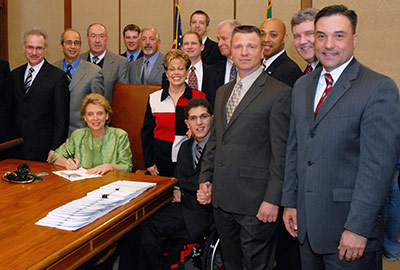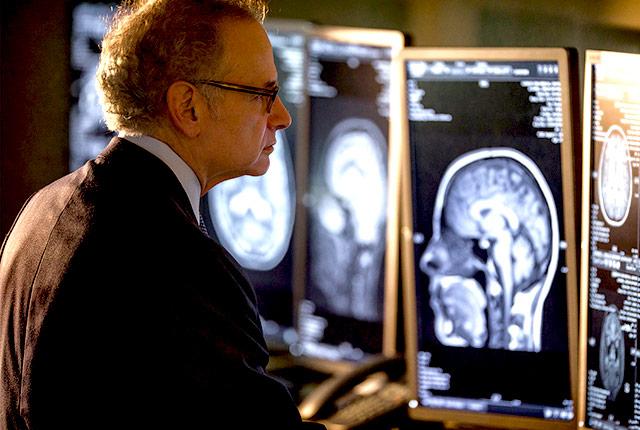
10 years ago: Lystedt concussion law made U.S. sports safer
UW Medicine was instrumental to legislation that sparked nationwide change toward care and protection of young athletes.Media Contact: Susan Gregg - 206.616.6730, sghanson@uw.edu
Today marks the 10th anniversary of the Zackery Lystedt Law, the first comprehensive mandate in the United States aimed to reduce concussion risk and protect student athletes after head injuries.
“The Sports Institute at UW Medicine was proud to stand among the coalition of partners – including the Brain Injury Alliance of Washington, the Washington Interscholastic Activities Association, and the Washington State Athletic Trainers’ Association – that worked with the Lystedt family to enact the law in 2009,” said Dr. Stanley Herring, co-founder and senior medical advisor to The Sports Institute at UW Medicine.
“Since then, we’ve seen a transformation in how communities view sports-safety legislation. This law was only associated with nominal costs, but it made youth sports safer. It saved lives,” Herring said.

On May 14, 2009, then-Washington Gov. Christine Gregoire signed the legislation into law. Its impetus was the 2006 injury sustained by Zackery Lystedt, a 13-year-old playing football for his middle school, outside of Seattle. Zackery had hit his head while making a tackle, left the game momentarily and then returned. He collapsed after the game, having suffered a catastrophic brain injury. He was treated at UW Medicine/Harborview Medical Center.
The new law essentially prohibited young athletes suspected of sustaining a concussion from returning to play without the approval of a licensed healthcare provider. The law aimed to mitigate concussions' consequences through education and medical intervention. Similar laws have been adopted in all 50 states.
Subsequent studies have shown that the reporting of concussions has increased and injury recurrence has decreased:
- Coaches are getting the education. Following the Lystedt Law, more than 98% of Washington state coaches reported completing concussion education and more than 95% demonstrated basic understanding of concussion causes and symptoms.
- More concussions are being reported. After enactment of the laws, the rate of new concussions increased, attributed to increased identification and reporting. The number of concussions documented in Seattle public high schools more than doubled after the law's enactment.
- Recurrent concussion rates declined. Nearly three years after passage of the laws, the recurrent concussion rate showed significant decline.
Many states, including Washington, are working to establish similarly responsible guidelines regarding how quickly a concussed athlete should return to the classroom.
“While we’ve seen tremendous progress since the Lystedt Law was passed, work remains. For example, there are still gaps when it comes to discovering the most effective ways to educate parents and athletes themselves about the risks of concussion,” Herring said. “The Sports Institute will continue to work with partners to bring increased awareness, resources, and scientific research to help address these remaining challenges.”
For information on national and state sports safety policies, visit the institute’s Sports Legislation Tracker.
For details about UW Medicine, please visit https://uwmedicine.org/about.
Tags:concussion
